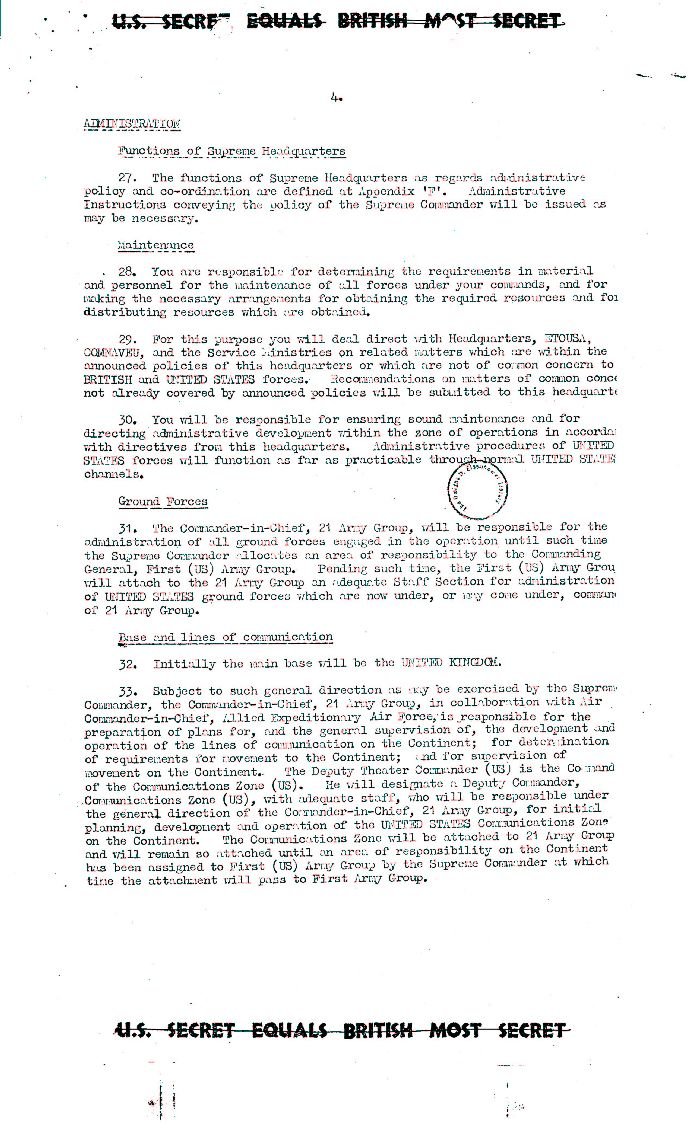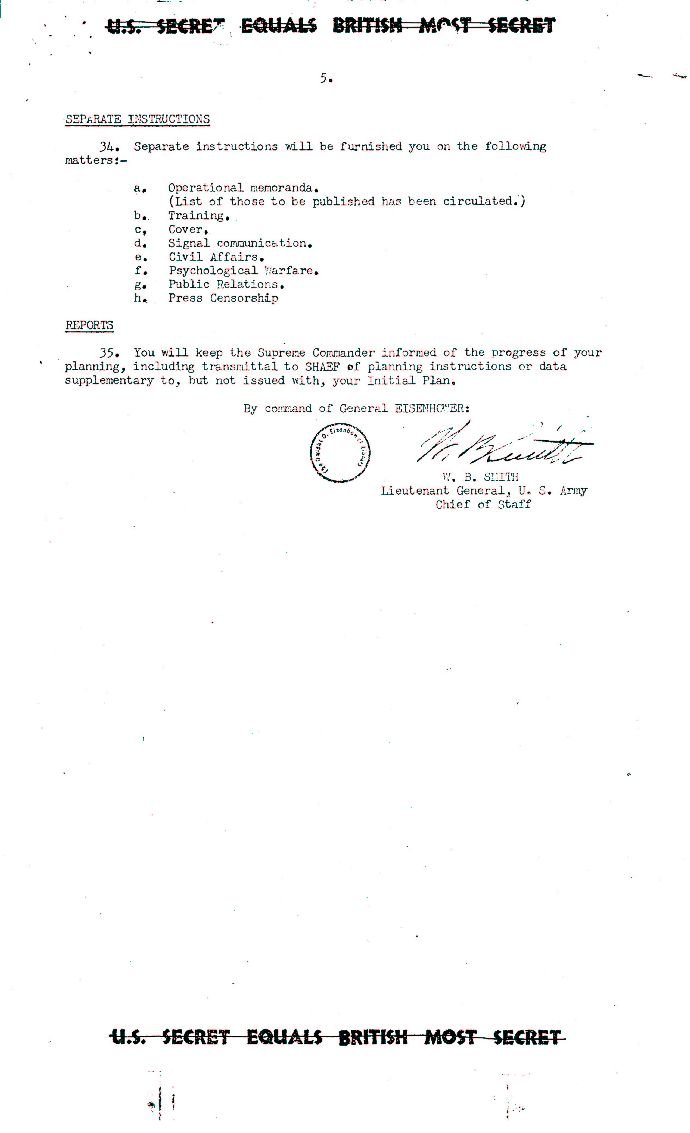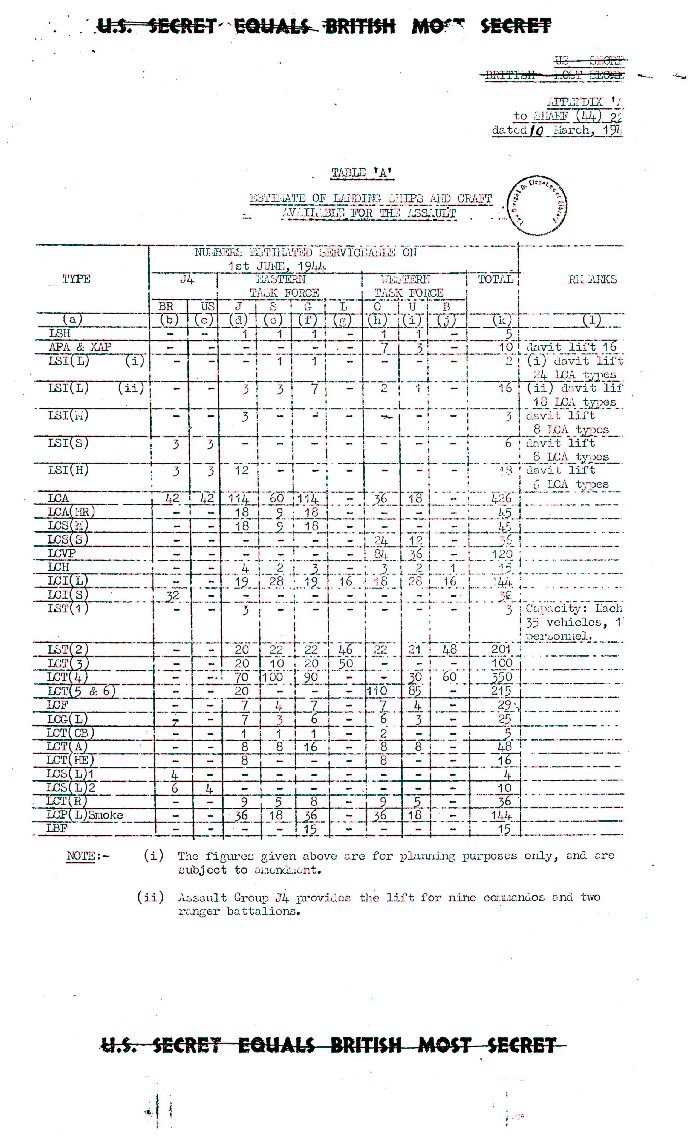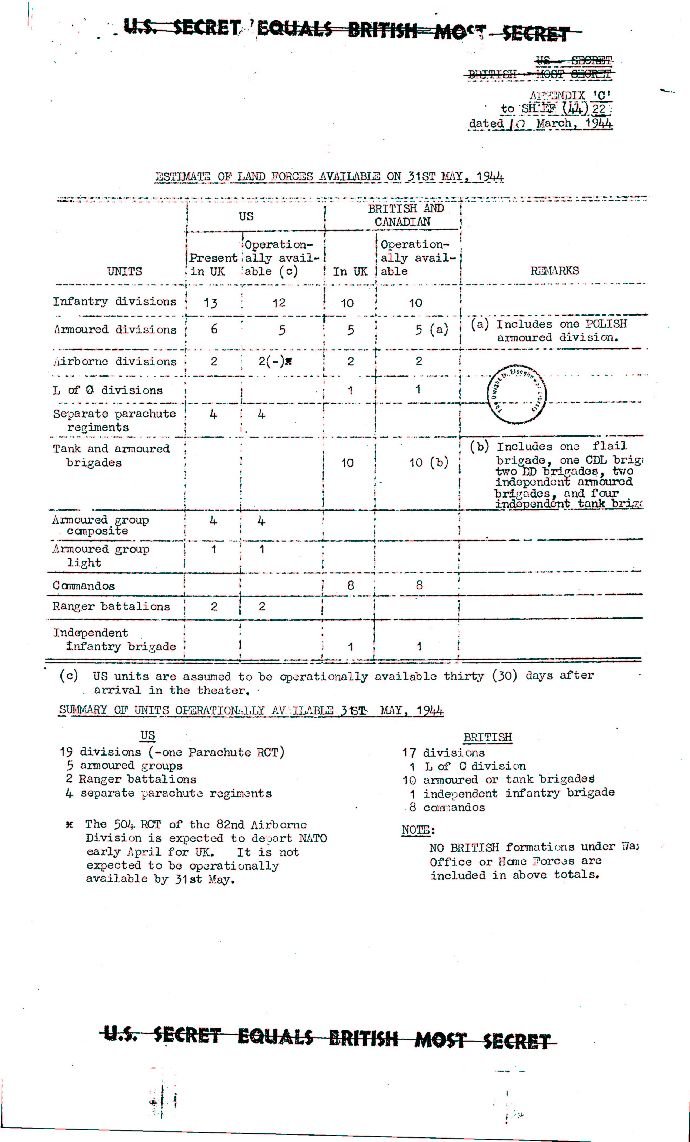The D-Day OPORD (#264)
Today’s post covers another aspect of the D-Day invasion -- the D-Day Operations Order or the plan for Operation Overlord. Drew Williams asked the question several weeks ago — how long was the D-Day OPORD?
The D-Day Operation Order
The D-Day Operations Order grew out of the planning done by Lieutenant General Sir Frederick Morgan, a British General who was appointed as Chief of Staff, Supreme Allied Commander (COSSAC) in early 1943. In June 1943, the COSSAC team selected Normandy as the site for the cross-channel invasion. Later, in December 1943, when General Dwight Eisenhower was selected as Supreme Allied Commander, he incorporated the COSSAC staff and their planning into the Supreme Headquarters Allied Expeditionary Force (SHAEF) staff and headquarters. In 1944, General Sir Bernard Montgomery reviewed the COSSAC plan and recommended expanding the invasion from a three-division amphibious assault to a five-division amphibious assault with three airborne divisions being dropped behind the beachhead.
The Operations Order itself was created by the Supreme Headquarters Allied Expeditionary Force staff under the guidance of its Chief of Staff, Lieutenant General Walter B. Smith. The Operations Order was issued on March 10, 1944. Its major recipients were Admiral Bertram Ramsay (commander of the naval forces), General Sir Bernard Montgomery (commander of the ground forces), and Air Chief Marshal Sir Trafford Leigh-Mallory (commander of the air forces).
The base document is six pages but has dozens of appendices to coordinate and synchronize the operation. The document reflects General Eisenhower’s command style — setting broad parameters for the operation but delegating the detailed planning down to subordinates. Interestingly, one of the first appendices is the distribution of landing craft between American (Utah and Omaha beaches) and United Kingdom (Gold, Sword and Juno beaches). As Churchill noted after the war, “we owe our victory to a thing called the LST.”
The OPORD
The Operations Order (OPORD) is a standard format for conveying information for a military plan. The D-Day OPORD used Object, Target, Command and Control, Allotment and Constitution of Forces, Execution of the Operations, Administration, and Others as paragraphs to coordinate and synchronize the cross-channel assault.
On the other hand, the modern US Army Operations Order consists of five paragraphs — Situation, Mission, Execution, Service and Support (or Admin and Logistics by the US Marine Corps), and Command and Control. Most people don’t know that the Army’s standard format for an Operations Order was developed by Frederick Garman in 1957 when he was assigned to Fort Benning's Ranger Department (the predecessor of today’s US Army Ranger School.) The Army quickly adopted it — it has been used in every conflict since the Vietnam War. Talk about an idea going viral!
In Afghanistan, the unit I was part of used the OPORD to convey year long campaign plans, as well as short duration missions. Using the same format for a plan enabled everyone to know where to listen for the information they needed (if they were receiving it orally) or look for the information (if they had a written copy). And more importantly, using the OPORD format forced us to think through all the elements of the plan.
Utilizing a corporate OPORD format will help you build a better plan for your team. Keeping the OPORD to 1-2 pages provides your corporate team enough of a framework, ensures they actually read the document, and enables them to retain their agility. I modified the military format to be a better fit a corporate environment. Spend a couple of days here in June to think through your plan using this framework:
Company X OPORD — Six Month Plan
July 1, 2024 - December 31, 2024
1. Situation:
The Market (What’s your market outlook? What assumptions are you building the plan upon?)
The Customer (What’s your customer doing?)
The Competition (Who’s your competition? What are they doing?)
Higher (What are they doing? What’s their mission?)
2. Mission: (Who, What, When, Where, Why)
3. Execution:
Leader’s Intent (see Post #25 or Post #105 to learn more about Leader’s Intent)
Purpose (A broader why then the one used in the mission statement. Enables decisions in your absence)
Key Tasks (The How)
End State (What does success look like on December 31, 2023?)
Major Events by Month (think about for the executive group, HR, IT, marketing, sales, and operations)
Key Tasks for different portions of the business to accomplish:
Operations
Marketing
Sales
HR
IT
Accounting and Finance
4. Admin, Logistics, and Communications
Administrative Issues/Tasks
Logistics to support the plan
Communications:
To the shareholders/board
To the market
To the company
Application
Use the OPORD to help think through the facets of your plan, build your plan, and help your team execute at a higher level in the second half of 2023
Conclusion
The last four blog posts on leaders and leadership from the World War II European Theater of Operations are:
Does your company build unsuccessful plans? Would your team benefit from a few planning techniques, borrowed from the military, that could improve the probability of success of your plans dramatically? If so, hit one of the buttons below and lets find out if TFCG can help your team like it has helped numerous others.
In the meantime, go on the offensive and use the OPORD as a tool to improve developing and giving plans to your team.








